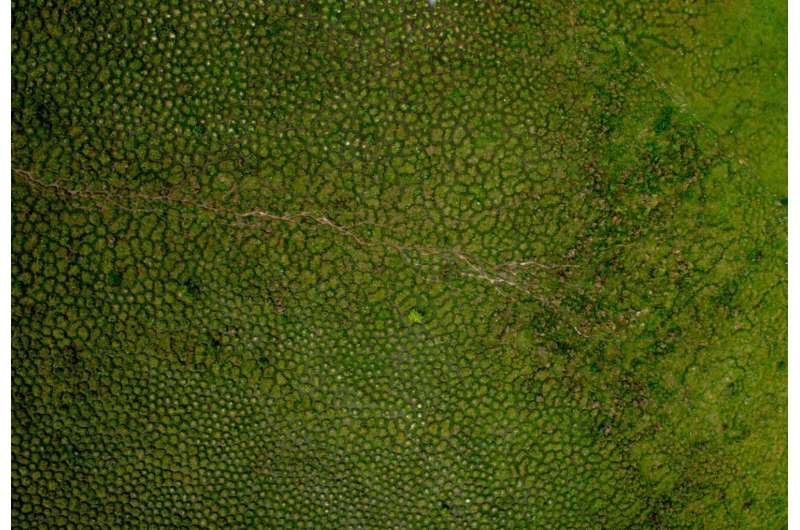Earthworms build huge mounds dotting tropical wetlands in South America

Earthworms are the engineers behind the 75,000 km2, densely packed, regularly spaced, and mound-patterned landscapes, called surales, in the South American seasonal tropical wetlands, according to a study published May 11, 2016 in the open-access journal PLOS ONE by Anne Zangerlé from Technische Universität Braunschweig, Germany, Delphine Renard from McGill University, Canada, and colleagues.
A seasonal wetland in Colombia and Venezuela is dotted with mounds that can reach as large as 2 meters tall and 5 meters across. However, despite this unusual vegetation pattern, the ecology of the mounds is little known, and some researchers have proposed that these patterned arrays result from erosion. The authors of this study investigated the origin and extent of the surales landscapes by comparing earthworms and soil properties at sites with and without mounds, as well as analyzing aerial images obtained from drones and Google Earth.
The researchers found that the mounds were dominated by the earthworm Andiorrhinus sp., which is also the largest earthworm in the study area at lengths up to 1 m. This earthworm feeds in shallowly flooded soil and deposits casts to build a small "tower" of dry habitat, where it breathes. The tower may eventually become a mound surrounded by a moat. The researchers propose that as neighboring mounds grow, they fill the intervening basins and form larger mounds, creating the surales pattern. By building mounds in this seasonal wetland, these worms "engineer" the ecosystem and create dry habitat also used by plants and other earthworms. The authors suggest that further research is needed to investigate the microtopography of the floodplains where surales occur, as well as whether worm behavior has driven the development of similarly patterned landscapes elsewhere in the tropics.
Anne Zangerlé adds: "We were really impressed not only by the regularity in the size and spacing of mounds in surales landscapes, but also by their spatial extent. We showed that they occur throughout much of the Orinoco Llanos, in both Colombia and Venezuela, but they have hardly been noticed by ecologists. We were surprised to find that the main driver of these earth-mound landscapes appears to be a single very large earthworm species."
More information: Anne Zangerlé et al, The Surales, Self-Organized Earth-Mound Landscapes Made by Earthworms in a Seasonal Tropical Wetland, PLOS ONE (2016). DOI: 10.1371/journal.pone.0154269
Journal information: PLoS ONE
Provided by Public Library of Science


















